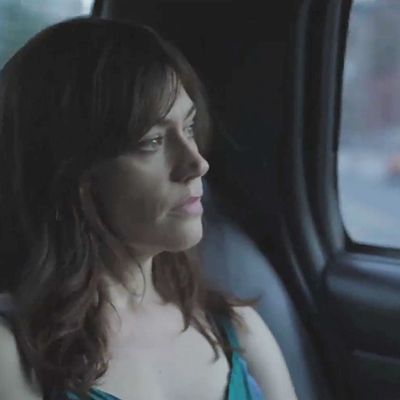
In 2014, artist and filmmaker Elisabeth Subrin started a Tumblr called “Who Cares About Actresses?” as a way to drum up early support for A Woman, a Part, her screenplay about a female TV star going through a midlife crisis. As Subrin writes, “actresses matter profoundly,” not just for their impeccable post-baby bodies or their ability to provide excellent advice about vaginal steaming, but because they show us what it means to be a woman in the world.
“We really do understand what a woman is from the women who play women in films,” Subrin explained to me on the phone yesterday. “And the irony is that [these parts] are very rarely written or created by women.” As she points out, there’s a strong positive correlation between having women behind the scenes and diverse parts for women on-screen, which makes Hollywood’s current dearth of female writers and directors so dire. “I started thinking about the bind that puts actresses in where they kind of hold the responsibility of presenting female identity to a culture and have very little agency in it, and the consequences of that.”
A Woman, a Part — her feature directorial debut, which screens at BAM this Sunday — stars Maggie Siff (Sons of Anarchy, Billions) as Anna, a successful television actress on the verge of a nervous breakdown. At 44, recovering from an autoimmune disease and self-medicating with Ritalin, Anna feels increasingly limited by the trite, under-written roles offered to her (a particularly gorgeous scene sees her flinging piles of scripts into the pool in despair). Hitting breaking point, she moves back to New York to reconnect with estranged friends from her theater days, Isaac and Kate (John Ortiz and Cara Seymour), both of whom are struggling with their own personal crises. By creating complicated female characters over 40 who definitely pass the Bechdel test, Subrin is fighting back against Hollywood’s limited vision of what a woman on-screen should look like.
She’s also a fine example of a woman who puts her (Kickstarter) money where her mouth is. “Sure, I can teach a women’s filmmaking class, I can make sure that 50 percent of the films I show are by women, but it’s another thing to make a film and put it out in the world and have your cast and crew reflect the type of film world you’d like to see,” explains Subrin, who made the film with a 50-percent-female crew. “And to tell stories that you’d like to see, that you haven’t seen.”
The key relationship of the film is that between Anna and her former mentor Kate, who had a falling out years ago, and yet whose conceptions of themselves as women and as actresses are bound up in their fraught history. “I don’t see my film to be at all about what men to make films about, which is women dealing with aging,” Subrin says, pointing out that almost every recent film about an actress, from Olivier Assayas’s Clouds of Sils Maria to Robert Greene’s Sundance-standout Kate Plays Christine, has been directed by a man. “I was really clear that that whole issue about an aging actress isn’t interesting to me. Anna’s not having a problem because of her career opportunities or her appearance. She’s having a crisis of faith, an internal crisis that has to do with values and what it means to be alive.”
And yes, she’s got shade: “I thought that Clouds of Sils Maria was about aging — an incredibly familiar subject — and I think by extension it was about the aging of the film industry,” Subrin observed wryly. “It felt like Assayas’s sadness about corporate media. He turned Juliette Binoche into this butch woman and this kind of bitter, dried-up-ice-queen character, which to me just feels like a cliché. That is not an inspiration to me.”
Siff has played complex female characters before (RIP, Don Draper’s OTP Rachel Menken), but she acknowledges these parts have been few and far between. “When I was younger it was sort of sardonic, sarcastic best friends,” Siff says. “And then bitchy ex-wives or sappy sentimental moms now that I’m in my 40s.” (Or, as Megan Fox said recently about Hollywood’s chronic stereotyping: “I do get plenty of, like, ‘interesting stripper.’ Or, ‘She’s super funny, but she’s also an escort”). It’s decidedly rare to see a film address the myriad things that middle-aged women actually struggle with — friendship, health, ambition, the search for self — without the filter of a male perspective.
“Early on [Subrin] said, just so you know, the camera will not be the male gaze. I was like ‘what does that mean!?’” Siff said with a laugh. “But she talked a lot about how it wouldn’t be about glamorizing or making me beautiful or objectifying or fetishizing things about me or the way I look. The camera felt less like a voyeur than like a collaborator with me. And that was different. And it was really lovely.”
As the pervy male director continues to be one of Hollywood’s most persistent archetypes, Subrin’s female gaze, female crew and feminist spirit combine to create a filmmaking experience that sounds positively utopian. “It’s one of my goals as an actress to keep trying to find projects that are helmed by women,” Siff continued. “Not just because of how I feel about it politically but because of how I feel about it as an actor inside of it. It just feels really different and it feels really good. And it should be 50 percent of my experiences working, instead of one in 10.”

